
How to Use ATtiny85 20PU: Examples, Pinouts, and Specs
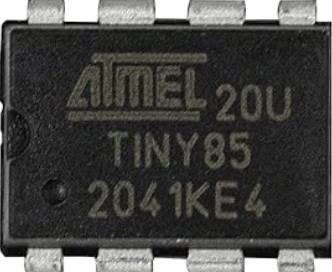
 Design with ATtiny85 20PU in Cirkit Designer
Design with ATtiny85 20PU in Cirkit DesignerIntroduction
The ATtiny85 20PU is a small, low-power 8-bit microcontroller from the AVR family, designed for compact and efficient embedded applications. It features 8 KB of flash memory, 512 bytes of SRAM, and 6 general-purpose I/O pins. Despite its small size, the ATtiny85 is highly versatile and capable of handling a variety of tasks, making it ideal for simple control systems, IoT devices, wearable electronics, and other space-constrained projects.
Explore Projects Built with ATtiny85 20PU
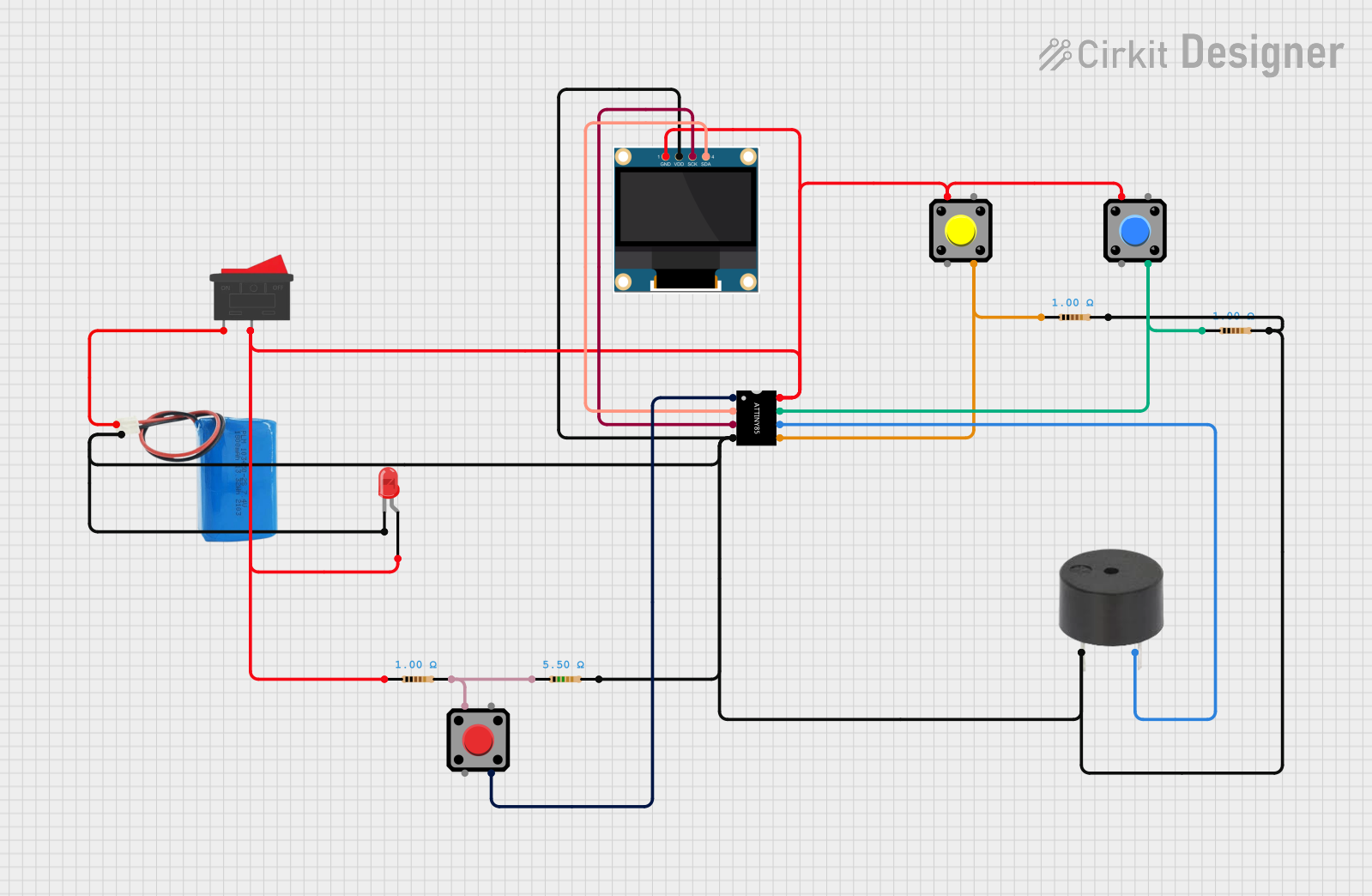
 Open Project in Cirkit Designer
Open Project in Cirkit Designer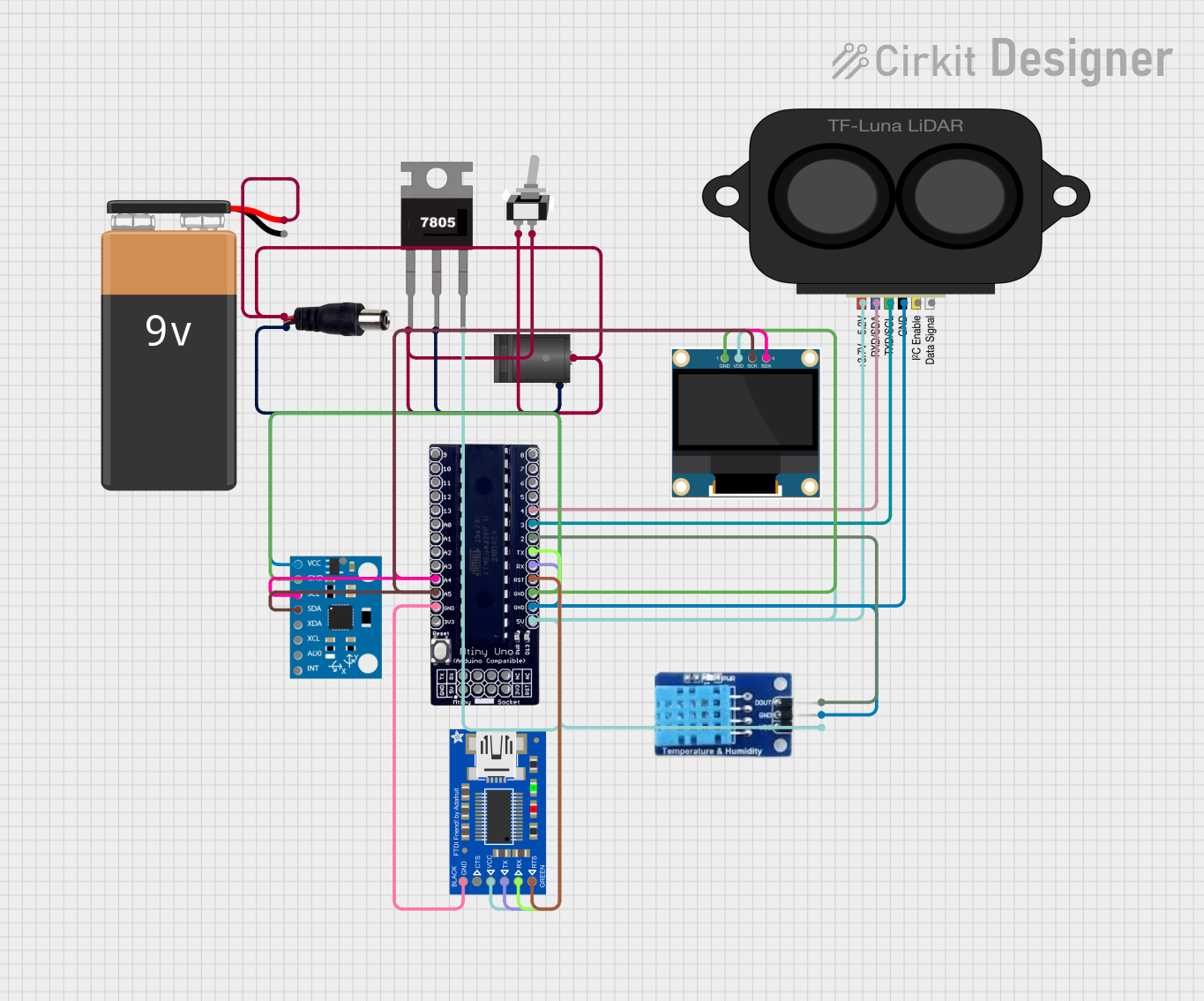
 Open Project in Cirkit Designer
Open Project in Cirkit Designer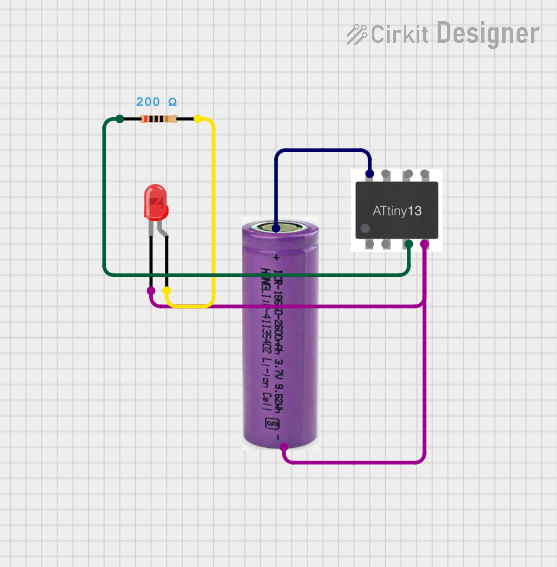
 Open Project in Cirkit Designer
Open Project in Cirkit Designer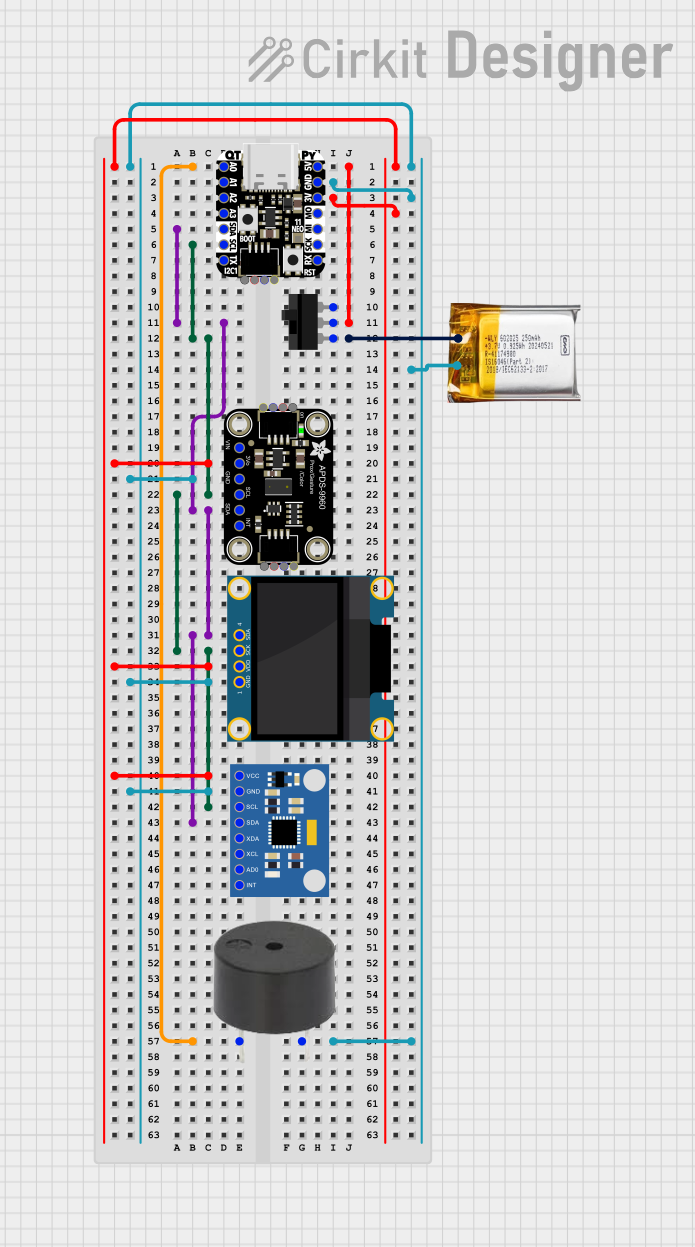
 Open Project in Cirkit Designer
Open Project in Cirkit DesignerExplore Projects Built with ATtiny85 20PU

 Open Project in Cirkit Designer
Open Project in Cirkit Designer
 Open Project in Cirkit Designer
Open Project in Cirkit Designer
 Open Project in Cirkit Designer
Open Project in Cirkit Designer
 Open Project in Cirkit Designer
Open Project in Cirkit DesignerCommon Applications and Use Cases
- LED control and lighting systems
- Small IoT devices and sensors
- Wearable electronics
- Battery-powered devices
- Simple robotics and automation tasks
- Signal processing and data logging
Technical Specifications
The ATtiny85 20PU is a DIP-8 (Dual Inline Package) microcontroller with the following key specifications:
| Parameter | Value |
|---|---|
| Architecture | 8-bit AVR |
| Flash Memory | 8 KB |
| SRAM | 512 bytes |
| EEPROM | 512 bytes |
| Operating Voltage | 2.7V - 5.5V |
| Maximum Clock Speed | 20 MHz |
| I/O Pins | 6 |
| ADC Channels | 4 (10-bit resolution) |
| PWM Channels | 2 |
| Power Consumption | Low-power (active and sleep modes) |
| Package Type | DIP-8 |
Pin Configuration and Descriptions
The ATtiny85 20PU has 8 pins, with the following configuration:
| Pin Number | Pin Name | Description |
|---|---|---|
| 1 | PB5 (RESET) | Reset pin (active low) or general-purpose I/O |
| 2 | PB3 (ADC3) | Digital I/O, ADC channel 3, or external interrupt |
| 3 | PB4 (ADC2) | Digital I/O, ADC channel 2, or external interrupt |
| 4 | GND | Ground |
| 5 | PB0 (ADC0) | Digital I/O, ADC channel 0, or PWM output |
| 6 | PB1 (ADC1) | Digital I/O, ADC channel 1, or PWM output |
| 7 | PB2 (SCK) | Digital I/O, SPI clock, or external interrupt |
| 8 | VCC | Power supply (2.7V - 5.5V) |
Usage Instructions
How to Use the ATtiny85 in a Circuit
- Power Supply: Connect the VCC pin to a regulated power source (2.7V to 5.5V) and the GND pin to ground.
- Programming: Use an ISP (In-System Programmer) such as an Arduino UNO or a dedicated USB programmer to upload code to the ATtiny85.
- I/O Connections: Connect peripherals (e.g., LEDs, sensors, or buttons) to the I/O pins (PB0 to PB5) as needed.
- Clock Source: The ATtiny85 can use its internal 8 MHz oscillator or an external clock source. Configure this in the fuse settings during programming.
Important Considerations and Best Practices
- Pull-Up Resistors: Enable internal pull-up resistors for input pins if no external pull-up is used.
- Power Consumption: Use sleep modes to reduce power consumption in battery-powered applications.
- Pin Limitations: Avoid exceeding the maximum current rating of 40 mA per pin or 200 mA for the entire chip.
- Decoupling Capacitor: Place a 0.1 µF ceramic capacitor between VCC and GND to stabilize the power supply.
Example: Programming the ATtiny85 with an Arduino UNO
Below is an example of how to blink an LED connected to PB0 using the Arduino IDE:
// Include the necessary library for ATtiny85
// Ensure you have installed the ATtiny board package in Arduino IDE
void setup() {
pinMode(0, OUTPUT); // Set PB0 (pin 5) as an output pin
}
void loop() {
digitalWrite(0, HIGH); // Turn the LED on
delay(1000); // Wait for 1 second
digitalWrite(0, LOW); // Turn the LED off
delay(1000); // Wait for 1 second
}
Steps to Upload Code:
- Install the ATtiny board package in the Arduino IDE.
- Connect the ATtiny85 to the Arduino UNO as an ISP programmer:
- Arduino UNO Pin 10 → ATtiny85 RESET
- Arduino UNO Pin 11 → ATtiny85 PB0 (MOSI)
- Arduino UNO Pin 12 → ATtiny85 PB1 (MISO)
- Arduino UNO Pin 13 → ATtiny85 PB2 (SCK)
- Arduino UNO GND → ATtiny85 GND
- Arduino UNO 5V → ATtiny85 VCC
- Select "ATtiny85" as the board and "8 MHz (Internal)" as the clock in the Arduino IDE.
- Upload the code using "Upload Using Programmer."
Troubleshooting and FAQs
Common Issues and Solutions
Problem: The ATtiny85 is not responding or programming fails.
- Solution: Check the wiring between the programmer and the ATtiny85. Ensure the RESET pin is correctly connected.
- Solution: Verify that the correct board and clock settings are selected in the Arduino IDE.
Problem: The LED does not blink as expected.
- Solution: Double-check the pin number in the code. For example, PB0 corresponds to pin 0 in the Arduino IDE.
- Solution: Ensure the LED is connected with the correct polarity and has a current-limiting resistor (e.g., 220 Ω).
Problem: Excessive power consumption in battery-powered applications.
- Solution: Use sleep modes and disable unused peripherals in the code to reduce power usage.
FAQs
Q: Can I use the ATtiny85 without an external clock?
A: Yes, the ATtiny85 has an internal 8 MHz oscillator, which is sufficient for most applications.Q: How do I reset the ATtiny85 fuse settings?
A: Use an ISP programmer to reprogram the fuses. Be cautious when setting the clock source to avoid locking the chip.Q: Can I use the ATtiny85 for I2C communication?
A: Yes, the ATtiny85 supports I2C communication using software libraries like TinyWire.
By following this documentation, you can effectively integrate the ATtiny85 20PU into your projects and troubleshoot common issues.